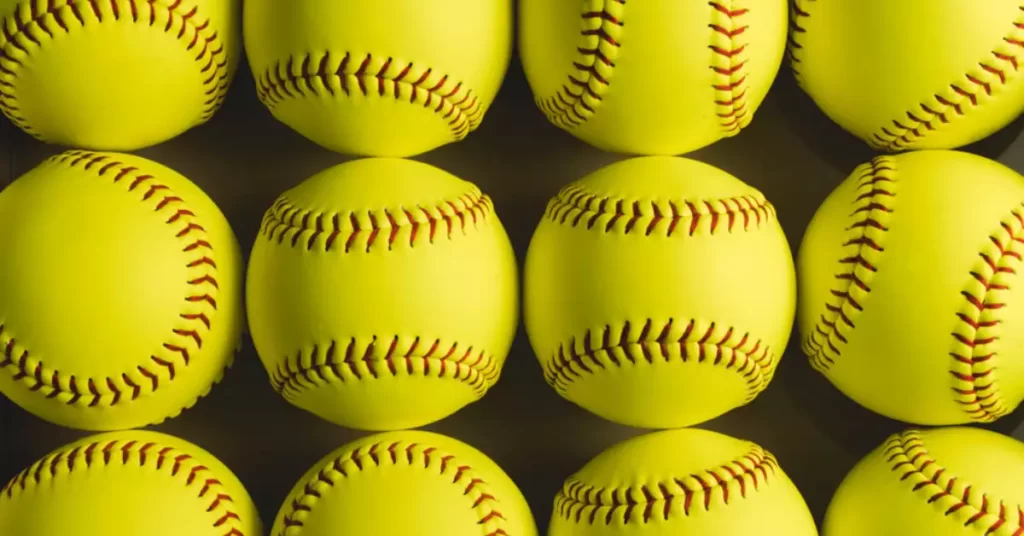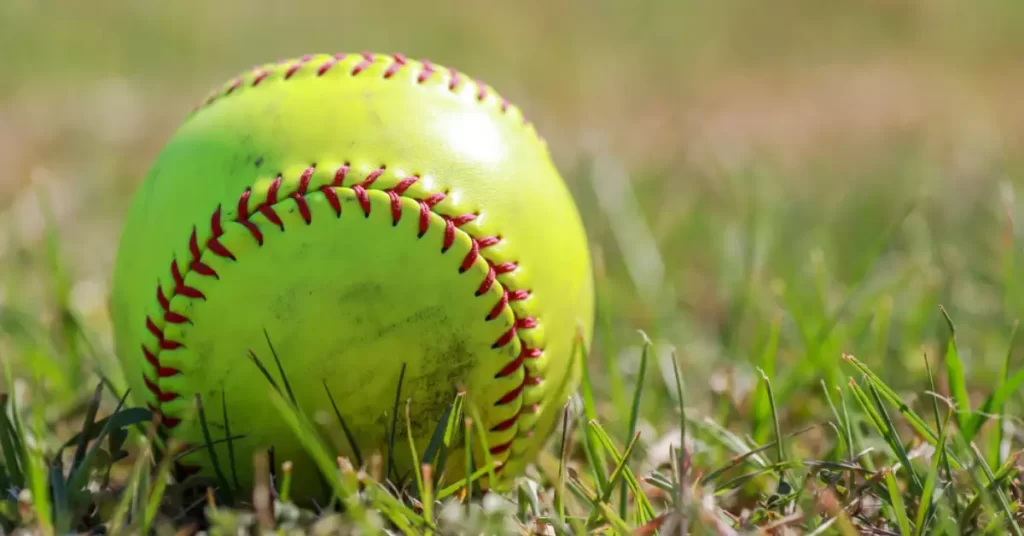The size of a softball is a significant factor in the sport, affecting the game’s dynamics and player performance. Knowing the exact diameter can greatly impact a player’s skills and overall understanding of the game. Softball is a popular pastime, often played casually and professionally, with varying rules and standards.
The diameter of a regulation softball is approximately 12 inches or 30.5 centimeters. This measurement is crucial for both players and coaches to ensure fair play and maintain consistency across various leagues and competitions.
Dive into the remainder of this article to explore the history of softball, different types of softballs, and how their dimensions may vary. Uncover the importance of the correct softball size for optimal player performance and gameplay.
Introduction to Softball
Softball is a fun and exciting sport that has been played since the late 19th century. It shares many similarities with baseball, but there are key differences that set it apart.
The most obvious difference is the size of the ball. Softball uses a larger ball than baseball, which impacts the way the game is played, from pitching styles to field dimensions.
Official Softball Size Standards
The diameter of a regulation softball varies depending on the type of game being played.
The International Softball Federation (ISF) and the Amateur Softball Association (ASA) have established standard sizes for various softball games:
- Fastpitch Softballs: 12 inches in circumference (approximately 3.82 inches in diameter)
- Slowpitch Softballs: 11 or 12 inches in circumference (approximately 3.5 or 3.82 inches in diameter)
- Youth Softballs: 10 inches in circumference (approximately 3.18 inches in diameter)
These standard sizes ensure consistency and fairness in competitions and leagues around the world.

Different Types of Softballs
Fastpitch Softballs
Fastpitch softball is played at a faster pace than slowpitch, with faster pitching speeds and a more aggressive style of play.
Fastpitch softballs have a diameter of approximately 3.82 inches and are designed for high-performance play.
Slowpitch Softballs
Slowpitch softball is a more leisurely version of the game, with slower pitching speeds and a more relaxed pace.
Slowpitch softballs come in two standard sizes: 11 inches (3.5 inches in diameter) and 12 inches (3.82 inches in diameter).
The smaller size is typically used for youth and women’s leagues, while the larger size is common in men’s leagues.
Training Softballs
Training softballs are available in various sizes and weights to help players develop their skills. Some training softballs are smaller or larger than regulation softballs, while others are designed to be heavier or lighter.
These variations allow players to focus on specific aspects of their game, such as pitching accuracy or hitting power.
Factors Affecting the Diameter of a Softball
Several factors can influence the diameter of a softball, including manufacturing tolerances, materials used, and weather conditions.
Softballs may slightly vary in size due to production processes and the materials used in their construction. Additionally, exposure to heat or moisture can cause a softball to expand or contract, affecting its diameter.

Softball Size for Different Age Groups
The appropriate size of a softball depends on the age group and skill level of the players. Here’s a general guideline for selecting the right size for various age groups:
- Ages 4-8: 10-inch circumference (approximately 3.18 inches in diameter)
- Ages 9-12: 11-inch circumference (approximately 3.5 inches in diameter)
- Ages 12 and up: 12-inch circumference (approximately 3.82 inches in diameter)
These guidelines ensure that players can comfortably grip and throw the ball, promoting skill development and reducing the risk of injury.
Measuring the Diameter of a Softball
To measure the diameter of a softball, you can use a caliper or a measuring tape. When using a caliper, place the ball between the jaws of the caliper and tighten until it touches the ball on both sides.
Read the measurement on the caliper’s scale. If using a measuring tape, wrap it around the ball’s widest point to find the circumference, and then divide the measurement by π (approximately 3.14) to calculate the diameter.
Why is the Diameter of a Softball Important?
The diameter of a softball plays a crucial role in the game. It affects the way players grip the ball, the speed at which the ball travels, and the overall dynamics of the game.
A larger diameter ball is typically easier to hit and catch, making it more suitable for younger players and beginners.
The diameter also impacts the pitching styles, as the larger size of a softball requires a modified grip and release compared to a baseball.
Materials Used in Softball Construction
Softballs are typically made from a core of cork or polyurethane, wrapped in layers of yarn or synthetic fibers, and covered with a leather or synthetic cover.
The choice of materials can affect the ball’s durability, performance, and feel. High-quality softballs are usually made with a leather cover, which provides a better grip and a more consistent performance compared to synthetic materials.
Choosing the Right Softball for You
Selecting the appropriate softball for your needs depends on your age, skill level, and the type of game you will be playing. Consider the following factors when choosing a softball:
- Age and skill level: Choose a size that is appropriate for your age group and skill level, as discussed earlier in this article.
- Type of game: Fastpitch and slowpitch softballs have different diameters, so be sure to choose the right type for the game you will be playing.
- Materials: Opt for a high-quality leather cover for improved grip and performance, especially if you play competitively.
- Compliance: Ensure that the softball you choose meets the requirements of your league or organization, such as ISF or ASA standards.
FAQs
What is the standard diameter of a softball used in most leagues?
The standard diameter of a softball used in most leagues is approximately 3.82 inches (12 inches in circumference). However , some leagues may use different sizes depending on the age group and type of game being played.
How does the diameter of a softball affect the game?
The diameter of a softball affects the game in several ways, including the ease of gripping and throwing the ball, pitching styles, and the overall dynamics of the game. A larger diameter ball is generally easier to hit and catch, making it more suitable for younger players and beginners.
How do I know which size softball to choose for my age group?
Here’s a general guideline for selecting the right size for various age groups:
- Ages 4-8: 10-inch circumference (approximately 3.18 inches in diameter)
- Ages 9-12: 11-inch circumference (approximately 3.5 inches in diameter)
- Ages 12 and up: 12-inch circumference (approximately 3.82 inches in diameter)
Make sure to check with your league or organization for any specific requirements regarding softball size.
Conclusion
In summary, a standard softball’s diameter is 12 inches or 30.5 centimeters, which plays a crucial role in the sport.
Having this knowledge at hand allows players, coaches, and enthusiasts to appreciate the game better and make informed decisions regarding equipment and gameplay.
Keep exploring the fascinating world of softball to uncover more intriguing facts, techniques, and nuances that make this sport a beloved pastime for many. The journey towards mastery is a rewarding one, filled with excitement, camaraderie, and personal growth.
